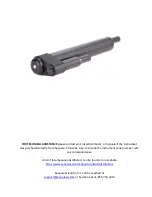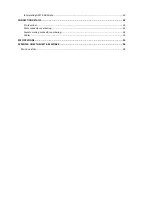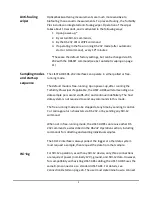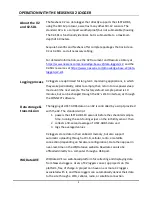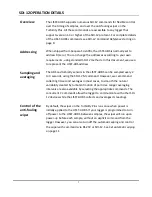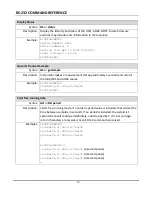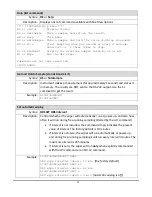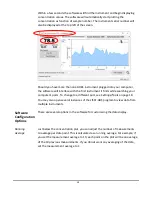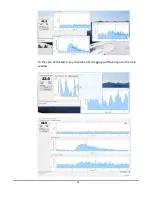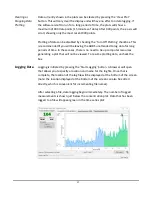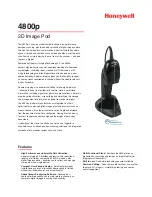
2
Anti-fouling
wiper
Optical backscattering measurements are much more sensitive to
biofouling than acoustic measurements. To prevent fouling, the Turbidity
Plus includes an integrated anti-fouling wiper. Operation of the wiper
takes about 10 seconds, and is activated in the following ways:
1.
Upon power-up,*
2.
By certain SDI-12 commands,
3.
By the RS-232 WI or WIPE command
4.
If operating in the free-running RS-232 mode (after automatic
start or GO command), every 10* minutes.
*These are the default factory settings, but can be changed via RS-
232 with the OBSSET command (see
Sampling modes
and start-up
sequence
The LISST-AOBS RS-232 interface can operate in either polled or free-
running mode.
The default mode is free-running. Upon power-up, after running the
Turbidity Plus wiper if applicable, the LISST-AOBS will start sending one
data sample per second via RS-232, and continue indefinitely. The host
data system is not required to send any commands in this mode.
The free-running mode can be stopped at any time by sending 3 control-
C or carriage-return characters via RS-232, or by sending any SDI-12
command.
When not in free-running mode, the LISST-AOBS can receive other RS-
232 commands, as described in the
commands for collecting and sending individual samples.
The SDI-12 interface is always polled: the logger or other data system
must request a sample, then request the data from that sample.
Wi ing
For SDI-12 operation, as with any SDI-12 device, only three connections
are required: power (nominally 12 V), ground, and SDI-12 data. However,
for compatibility with existing LISST-ABS cabling, the LISST-AOBS uses the
same 8-pin connector as a standard LISST-ABS. For details, see
on page 24. The user must determine how to connect



